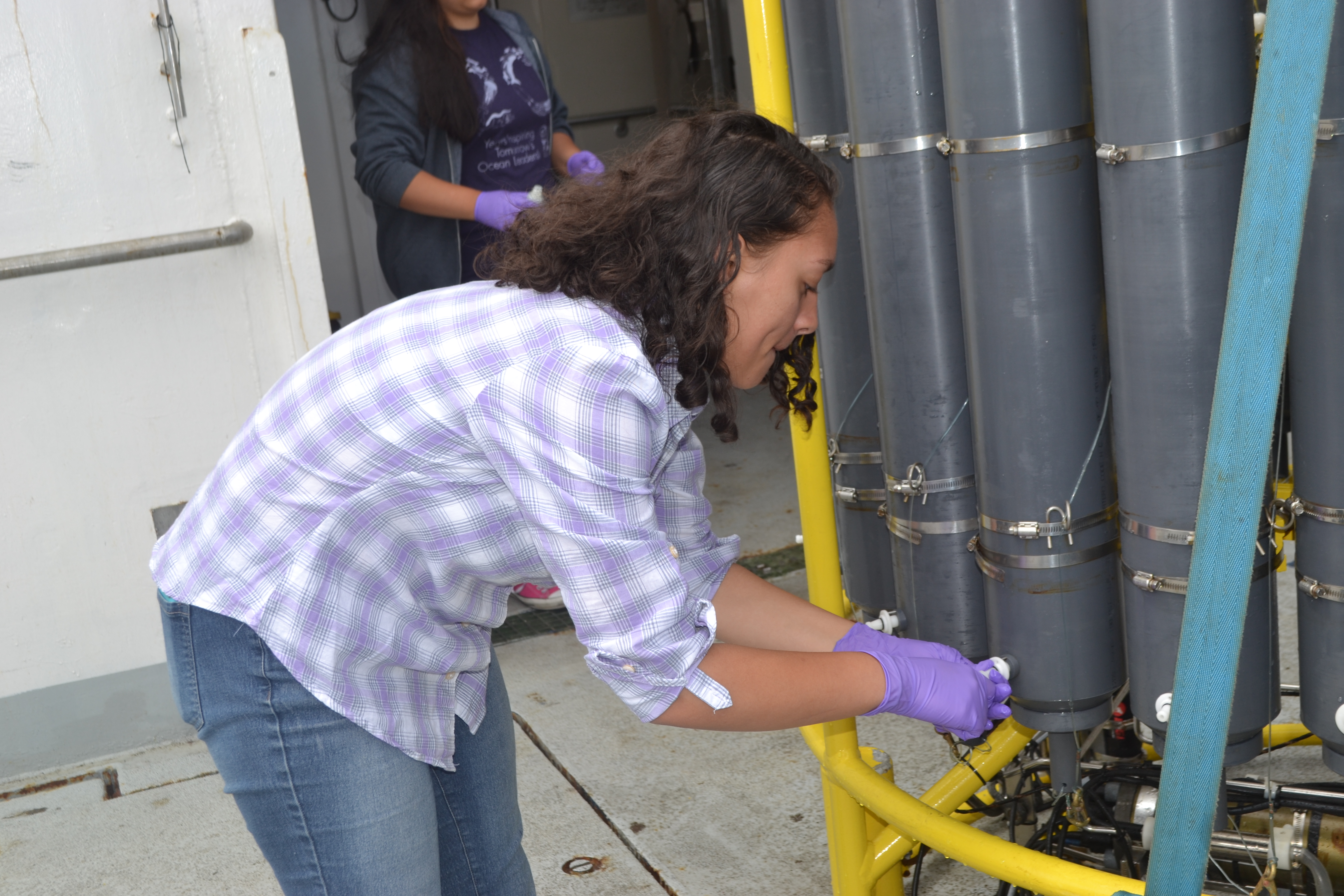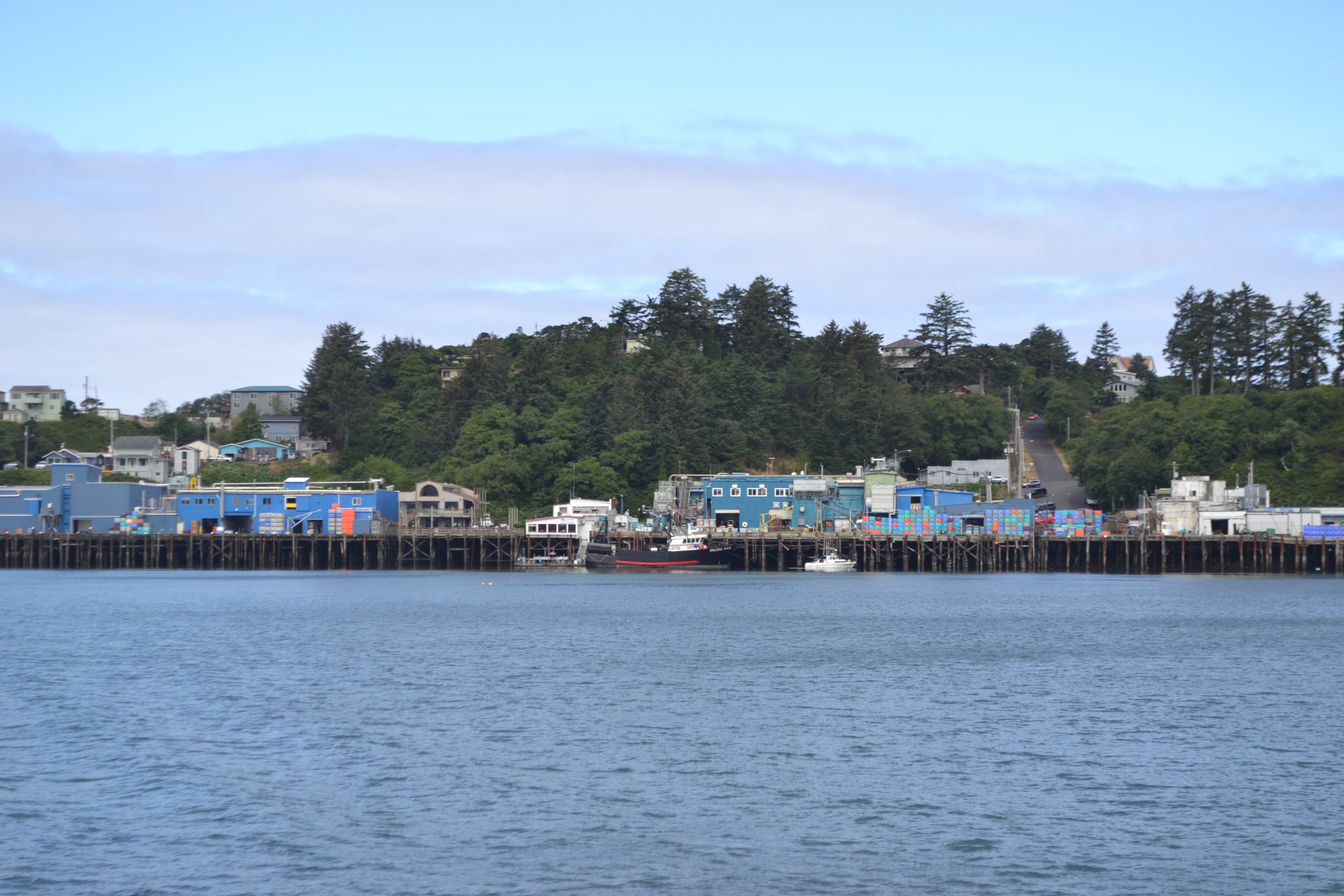Image Archive





























Eve Hudson, a high school student taking classes at Peninsula College, learns to sample fluids collected with the CTD on the first cast of the Cabled Array OOI-NSF-UW VISIONS'17 cruise. Credit: M. Elend, University of Washington.

Kelsy Cain, a student in the Kelley Lab at the UW Center for Environmental, takes water samples to filter, and then grow microbes under experimental conditions. Credit: M. Elend, University of Washington.

Katie Gonzalez and Willem Weertman take water samples from the first CTD cast on the VISIONS17, OOI-NSF cruise. Credit: M. Elend, University of Washington.

Life thrives on the Shallow Profiler Mooring platforms at 200 m beneath the oceans' surface. This 12 ft across mooring platform is coated in dense communities of very large anenomes, small pink sea urchins, feathery brown crinoids , and small crabs and shrimp...the closer you look the more you see. Credit: UW/NSF-OOI/Jason.

The ROV Jason enters the water at the Cabled Array Offshore Oregon site, water depth 600 m. Credit: M. Elend, University of Washington.

Alex Andronikides (Queens College, New York) and Willem Weertman (UW Oceanography) watch the first launch of Jason on the UW-NSF-OOI VISIONS'17 cruise. Credit: M. Elend, University of Washington.

The ROV Jason enters the water for the first dive (J2970) of the UW-NSF Regional Cabled Array cruise. Credit: M. Elend, University of Washington.

The R/V Revelle entering the channel from Yaquinna Bay to the NE Pacific at the beginning of the VISIONS'17 cruise. Credit: Katie Gonzalez, University of Washington.

THe R/V Roger Revelle begins its steam west to the Oregon Endurance Offshore Site. Credit: M. Elend, University of Washington.

The view of the inner harbor in Yaquinna Bay as the R/V Revelle begins its transit on Leg 1 of the VISIONS'17 cruise. Credit: M. Elend, University of Washington.

Students on Leg 1 of the VISIONS'17 cruise see the Pacific Ocean for the first time onboard the R/V Revelle. Credit: M. Elend, University of Washington.

The R/V Revelle departs Newport to start the beginning of Leg 1, Regional Cabled Array Operations and Maintenance Cruise. Credit: M. Elend, University of Washington.

Kevin Eyer, a 5th grade teacher at Gordon Elementary School.

Willem Weertman

Data for the Bottom Pressure Tilt (BOTPT) instrument is easily viewed through the OOI Data Portal. This image shows an example of pressure data averaged every 15 seconds as viewed through the quick look option on the Data Portal for the BOTPT instrument at the Central Caldera Site. The large offset shown on April 24, resulted from a 2.4 m drop in the seafloor over an ~ 24 hour period as the volcano was erupting. Credit: OOI-NSF.

Claire Decoy

Eric McRae, an engineer at the UW Applied Physics Laboratory, checks out an instrumented science pod to be installed on a Shallow Profiler Mooring during the VISIONS'17 cruise. Credit: D. Kelley, University of Washington.

Dahl dolphins play alongside the ship on one of our previous cruises. Credit: M. Elend, University of Washington, V17.

Hanis Zulaikha

Addien Wray

Theresa Whorley

Jackie Toepfer

Ann Stafford

Sasha Seroy

Meethila Rahman

Brendan Philip

Aaron Mau

Michelle Lee
- Anemone
- Animal
- Arthropod
- ASHES
- Axial
- Axial Base
- Axial Biology
- Axial Caldera
- Bacteria
- Basalt Lava
- BEP
- Biofouling
- biolgoy
- Biology
- Camds
- Camera
- Camhd
- Central Caldera
- Ciliates
- Cnidaria
- Coastal Biology
- Crab
- Deep Profiler Mooring
- Dive Highlights
- Eastern Caldera
- Echinoderms
- Endurance Array
- Engineering Team
- ENLIGHTEN 10
- Exploratorium
- Fish
- Geology
- HD Camera
- HPIES
- Hydrate Ridge
- Hydrates
- Hydrophone
- Hydrothermal Vents
- Illustration
- Inshore 80 Meters
- Instrument
- International District
- J-BOX
- Jason
- Jellyfish
- Junction Box
- K12
- Lava
- Mollusk
- Moorings
- Nodes
- Nudibranch
- Octopus
- OOI
- Oregon Offshore
- Oregon Offshore 600 m
- Oregon Shelf
- Oregon Slope Base
- People
- PN1B
- PN1D
- Polychaetes
- PPSDN
- Primary Node
- RASFL
- ROCLS
- ROPOS
- ROPOS Dives
- ROV Team
- RV Revelle
- RV Sikuliaq
- RV Thompson
- Salp
- Sample
- SC13
- Science Team
- Sea Cucumber
- Sea Star
- Sea Urchin
- Seafloor
- Seismometer
- Sensors
- Shallow Profiler Mooring
- Shark
- Shipboard
- Shore Station
- Slope Base
- Smoker
- Soft Coral
- Southern Hydrate Ridge
- Sponge
- Squid
- Students
- Students & Guest Participants
- Tmpsf
- Tubeworms
- VISIONS 11 Leg 1
- VISIONS 11 Leg 2
- VISIONS 11 Viewers
- VISIONS 13
- VISIONS 14
- VISIONS 15
- VISIONS 16
- VISIONS 17
- VISIONS 18
- VISIONS 20
- VISIONS 22
- VISIONS 23
- Visualization
